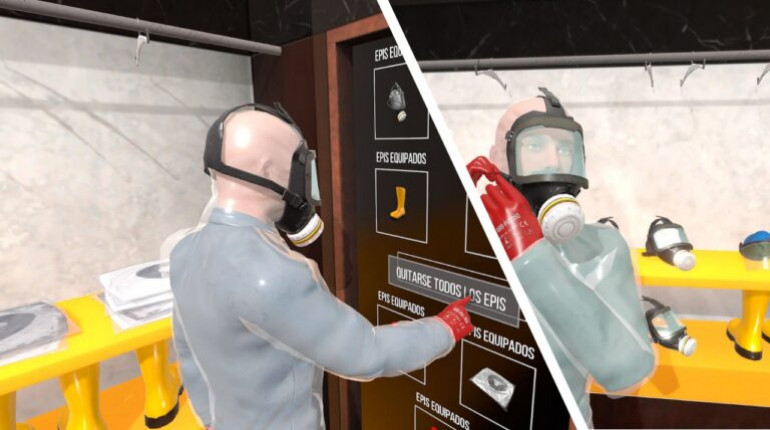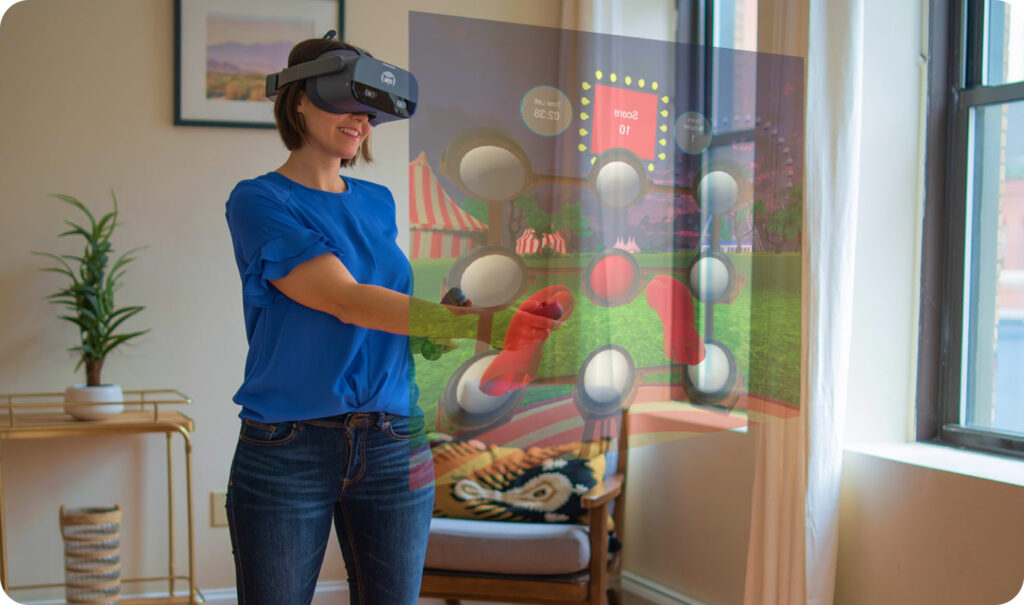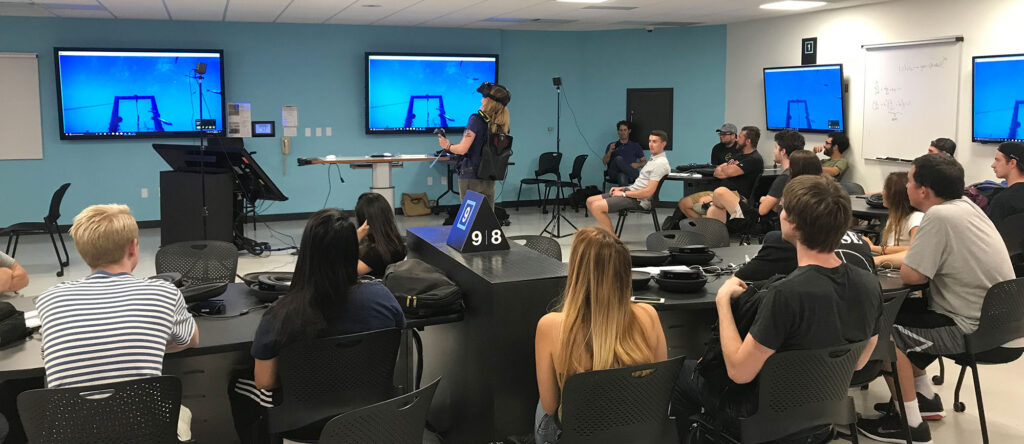
Are you ready to revolutionize your Embodied Learning programs with Immersive Technology?
As an educator, trainer, or learning and development professional, you’re always looking for new and innovative ways to engage learners, promote skill development, and drive real results. Are you tired of traditional approaches to education and training that fail to engage learners and produce lasting results?
Embodied learning and immersive technologies offer a transformative alternative that enables learners to fully immerse themselves in the learning experience. By creating virtual environments, simulations, and interactive experiences, these cutting-edge tools enable learners to develop critical thinking, problem-solving, and decision-making skills in a safe and controlled environment.
Research shows that embodied learning and immersive technologies can also promote deeper learning, enhance memory retention, and improve knowledge transfer.

In this article, we’ll explore the potential benefits of embodied learning and immersive technology, such as improved engagement, deeper learning, and enhanced memory retention, as well as some practical tips, challenges, and limitations to consider when implementing these approaches in your education or training programs.
Whether you’re a teacher, trainer, or learning and development professional, you won’t want to miss this article to unlocking the power of embodied learning with immersive technology.
By providing learners with a hands-on, interactive approach to understanding complex systems, we can foster a deeper understanding and appreciation of the world around us. The ability to simulate and explore different scenarios can help us develop better solutions and make more informed decisions, ultimately leading to a more sustainable future.
Embodied learning and immersive technology offer a wide range of benefits to learners and educators alike. By providing personalized learning experiences with real-time feedback, these innovative tools help keep learners engaged and motivated. But it’s not just about engagement – these approaches also promote deeper learning by creating virtual environments and interactive experiences that allow learners to fully immerse themselves in the material. Research has shown that this can lead to enhanced memory retention and knowledge transfer.
When learners can experience concepts firsthand, they are more likely to remember them and apply them in real-world situations. With embodied learning and immersive technologies, the possibilities are endless – from exploring complex systems to practicing new skills in a safe and controlled environment, these tools are changing the face of education and training.

School and Higher Education & Immersive Technology:
- Active learning: Embodied learning and immersive technologies can promote active learning, where students are encouraged to participate in the learning experience rather than passively consuming information.
- Increased collaboration: By providing a shared virtual space for students to work together, embodied learning and immersive technologies can enhance collaboration and communication skills.
- Access to new experiences: Embodied learning and immersive technologies can provide students with access to experiences and environments that may not be available to them otherwise, such as historical or scientific simulations.
Corporate Learning & Immersive Technology:
- Cost-effective training: By simulating complex or dangerous situations in a safe virtual environment, embodied learning and immersive technologies can reduce the cost of training and development.
- Improved decision-making skills: By allowing employees to practice making decisions in a simulated environment, embodied learning and immersive technologies can improve critical thinking and decision-making skills.
- Enhanced productivity: By providing personalized, on-demand training experiences, embodied learning and immersive technologies can help employees learn more efficiently and effectively, leading to increased productivity.

SUCCESS STORY
One of the most successful examples of embodied learning in action is the project conducted by researchers at the University of Idaho. They developed an immersive, embodied mathematics curriculum using virtual reality and motion tracking technology. The project involved the use of a 3D virtual environment where students could interact with mathematical concepts and formulas in a hands-on manner.
The technical infrastructure included a head-mounted display, motion tracking sensors, and specialized software that created a virtual environment where students could explore geometry and calculus concepts in a more intuitive way. By using their own bodies to manipulate virtual objects and equations, students were able to develop enhanced spatial reasoning and gain a deeper understanding of mathematical principles.
The results were impressive, with students who participated in the embodied learning curriculum outperforming their peers who used traditional methods by up to 22 percent in geometry exams and up to 19 percent in calculus exams. The success of this project highlights the potential of embodied learning and immersive technologies to revolutionize education and training.


Designing effective immersive learning experiences may also require expertise in areas like 3D modeling, animation, and game development. Depending on the complexity of the experience you want to create, you may need to work with a team of developers, designers, and content creators to bring your vision to life.
Here's a few practical tipsfor immersive embodied learning:
Determine your learning objectives:
Determine your learning objectives and the specific skills you want your learners to develop.
Design appropriate learning experiences and ensure that you’re using the right technology to support your goals.
Choose the right hardware and software:
When choosing hardware and software for embodied learning, consider factors like ease of use, compatibility, and cost.
Some popular tools for embodied learning include virtual and augmented reality headsets, motion capture systems, and haptic devices.
Develop immersive learning experiences:
For effective embodied learning experiences, design immersive experiences that allow learners to engage with the content in a meaningful way.
Creating virtual environments, simulations, or interactive experiences that encourage learners to explore and experiment.
Provide real-time feedback: One of the key benefits of embodied learning is the ability to provide real-time feedback to learners.
By providing immediate feedback on their actions, learners can adjust their behavior and develop new skills more quickly.
Evaluate learning outcomes: Evaluate the effectiveness of your embodied learning programs by measuring learning outcomes.
Assessing changes in learners knowledge, skills, or attitudes over time, as well as collecting feedback from learners on their experiences with the technology.

Providing real-time feedback and personalized learning experiences, these tools can help learners stay motivated and achieve their goals.
To successfully implement embodied learning using immersive technology, it is important to consider practical tips such as selecting the appropriate hardware and software, designing activities that promote active engagement, and providing support and training for learners and instructors.
As technology continues to advance, there is no doubt that embodied learning and immersive technologies will play an increasingly important role in education and training.
By staying up-to-date with the latest developments and best practices, educators and trainers can offer their learners the most effective and engaging learning experiences possible.
Stay connected with us for more updates on embodied learning and immersive technology, and stay tuned to check out our demo module to experience it firsthand. Sign up now to stay informed!
